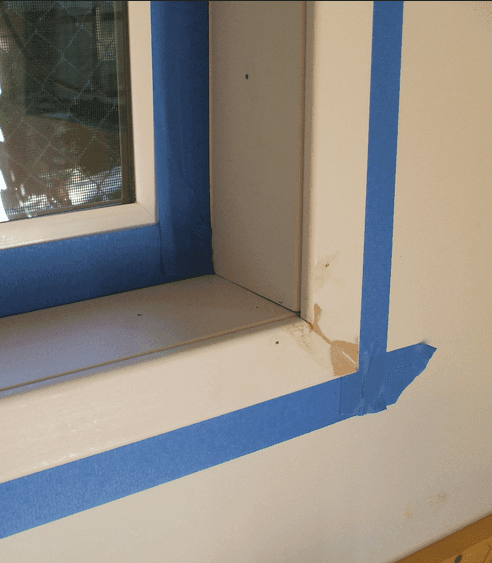
The traditional wisdom is that your edges should be carefully taped before you begin your interior painting project. In fact, there are whole aisles of stores devoted to various widths and types of painters tape made just for this purpose. But there are a number of voices out there saying that this is not necessary. They say it’s expensive, time-consuming and unnecessary, and that you are better off without it. So what is the verdict? Do I need to tape before I paint?
Advantages of Taping Before Interior Painting
If you use tape to create straight lines before you paint, it can help you in several ways. First, the painting goes more quickly because you don’t need to be so careful along the edges. Also, if it is done properly, the lines left behind are clean and straight, and very professional looking.
What to Watch for When Taping for Painting
Make sure you have good tape that is made for this purpose. It needs to be able to hold well during your painting, but not cause tearing when you remove it.
We recommend (and use!) Frog Tape when clean, straight lines are a must. This unique tape has a special powder in the adhesive that activates when in contact with paint. It seals out “bleeding” better than any other tape we’ve seen.
Remove the tape after the paint is dry, but before it is fully cured (24 to 48 hours). Letting the paint get too far cured will cause ripping.
Put your tape on straight! You can’t get straight lines with your tape wavy or wrinkled.
Run your finger firmly along the edge of the tape that will be painted, affixing it securely along that side.
Why Do Some People Prefer Not to Tape?
Some do-it-yourselfers swear that they can do a better job without tape, and complete it faster. If you have a very steady hand and a high-quality brush, it is possible to get clean lines and uniform results without tape. Many people who claim this kind of skill, however, are not quite as remarkable as they seem to think, and the end results are really not comparable with those that a professional painter can achieve.
If you want to try it, begin in a “low-risk” area, where your mistakes can be hidden or painted over. Get a good brush and try your hand at keeping a straight line while you paint the edges. If it turns out you are good at it, you will definitely save some time by not taping.
What Do Professional Painters Do?
Even real house-painting professionals, with steady hands and experienced eyes, very frequently use tape to create their ruler-straight lines and clean cut-ins. Because every painter and every project is unique, there is no ironclad rule for this. Nevertheless, for a premium painter like ALLBRiGHT 1-800-PAINTING Painting, there is no room for compromising quality. If we believe taping is necessary for best results, be assured we will gladly take the time to do it. We also use plenty of plastic sheeting and dropcloths to make sure not even a drop of paint ends up where it doesn’t belong.
Brilliant results in interior painting don’t come by cutting corners or overestimating your skill. Premium results come by having the right tools, using the right procedures, paying attention to details and emphasizing training and practice. When you hire ALLBRiGHT 1-800-PAINTING Painting, you can Expect Brilliance!
